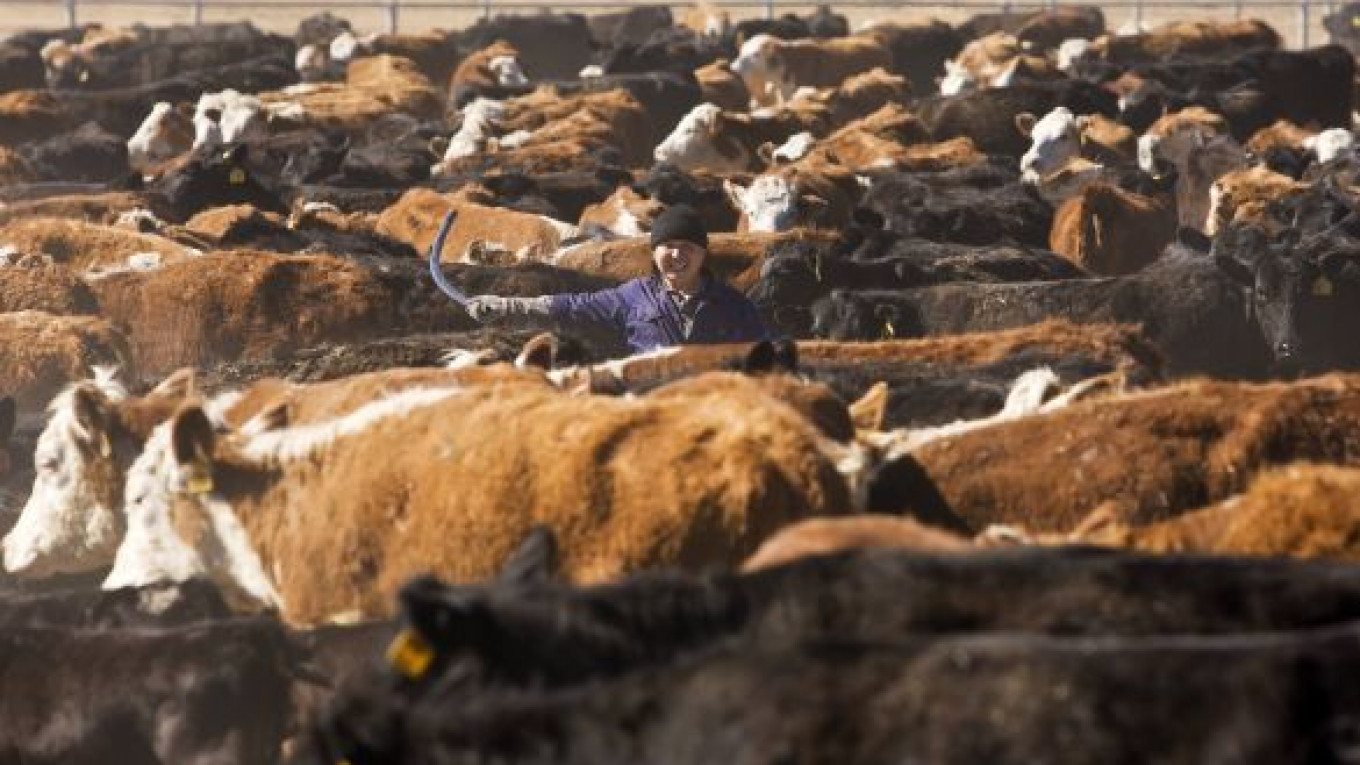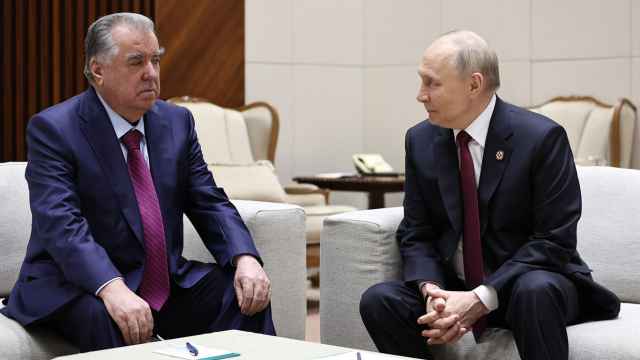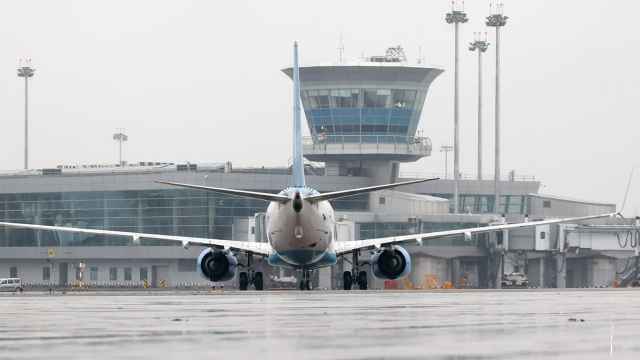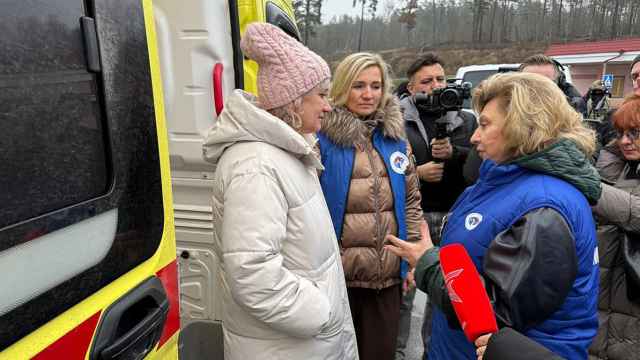MAMAI, Kazakhstan — Wearing a Stetson and spurred cowboy boots, Michael Slattery tethers a restive calf with his lasso like a swashbuckling hero from a Wild West movie.
But the 23-year-old Nebraskan is a man with another mission: to help Kazakhstan revive its lost reputation as a major beef exporter. In October, he escorted the first of his hardy Hereford and Angus cattle from North Dakota to the open steppe.
"The first time we landed, we had one of the heifers jump out of her crate coming off an airplane and take off down the runway in Astana," said Slattery, ranch manager at a modern cattle farm 260 kilometers north of the Kazakh capital.
"The customs agents were chasing her down as planes were flying in," he said, laughing behind the black beard that lines his suntanned face. "After that, I said, 'What am I getting myself into?'"
Slattery is sharing the skills acquired at his father's ranch in Nebraska with around a dozen Kazakh farmers in a bold move to implement a project central to President Nursultan Nazarbayev's drive to diversify Central Asia's largest economy.
KazBeef, a joint venture owned 85 percent by Kazakh state agribusiness holding KazAgro and 15 percent by U.S. Global Beef Consultants, aims to boost the efficiency of cattle farming and revive exports by introducing more productive breeds.
Kazakhstan, a giant nation covering an area five times the size of France and populated by just 16.4 million, is widely known as a major exporter of oil, uranium and industrial metals.
It is also the world's largest exporter of wheat flour and No. 7 exporter of wheat, largely owing to new technologies and imported machinery applied to the vast areas first sown to grain during the Soviet Union's "Virgin Lands" campaign in the 1950s.
Cattle farming, on the other hand, collapsed after the demise of the Soviet Union in 1991. Many cows were slaughtered or sold, dealing a severe blow to farmers raised in the tradition of the Turkic nomads who once boasted enormous herds. In 1990, Kazakhstan exported 184,500 tons of beef, most of it to Russia, official data show. Current exports are virtually nil.
The number of cattle in Kazakhstan fell by more than a third to 6.18 million head in 2010 from 9.76 million head in 1990. The average weight per head of cattle — 420 kilograms in 1990 — fell to 310 kilograms in 2009, compared with an average world yield of 520 kilograms.
As part of a state-backed industrialization drive to reduce dependence on natural resources, Kazakhstan plans by 2016 to be producing 500,000 tons of beef and exporting 60,000 tons.
Production is set to rise further to 751,000 tons by 2020, while exports will treble to over 180,000 tons — a recovery to the pre-independence levels of 1990.
Nurgali Bisekenov, director of the Mamai farm where Slattery works, said Kazakhstan already supplies all of the meat required for its own domestic consumption.
"Now we are starting work on exports to cover the needs of our neighbors," he said. "And who is our neighbor? Russia. This giant bear is always hungry."
Bisekenov said the farm's produce would include the famed marbled beef steaks, a prime delicacy in the upmarket restaurants of Moscow and St. Petersburg.
KazAgro estimates Russian meat imports at about 1.5 million tons per year, including about 800,000 tons of beef.
To achieve its goal, the state company plans within the next five years to import up to 72,000 head of high-productivity cattle. KazAgro estimates that 130 billion tenge ($890 million) will be required to finance the project.
Imported cattle will be used for thorough selection to ennoble local breeds and create new ones better adapted to the country's harsh climate. Around 20,000 jobs will be created in cattle farming and another 100,000 jobs in associated sectors.
The Mamai farm, at the vanguard of the national drive, has flown in 1,327 pregnant cows, including 682 of the black Angus breed and 645 white-and-brown Hereford cows, accompanied by 20 bulls. More than 1,200 have calved, Bisekenov said.
"The American cows feel just fine here in Kazakhstan. They have weathered the winter brilliantly," he said. Even as temperatures plunged 40 degrees below Celsius, they spent much of their time outside their corrugated-metal sheds, he said.
Around the farm in every direction, hundreds of kilometers of open steppe offer high-quality grazing land. Kazakhstan has about 180 million hectares of pasture, more than 20 hectares per head of cattle, almost double the level in Australia.
The Angus calves have gained an average 1 kilogram in weight daily, while heifers often reach a body mass of more than 500 kilograms at the age of 18 months. The closest Kazakh breeds weigh around 360 kilograms at the same age.
Future growth, Bisekenov said, will depend on how quickly the younger generation of farmers in Kazakhstan can acquire new skills and adopt the versatility of their Western counterparts.
"I prefer dealing with young people," Bisekenov said. "A Soviet-trained tractor driver often doesn't want to understand that, apart from bringing hay to the cattle, he should also feed the cows. Here we try to mould a new, responsible personality."
Slattery agrees. He has just injected vaccines into scores of furiously resisting calves. "The mind-sets are a lot different. People are kind of one-track minded here," he said. "They only want to drive a tractor. They don't want to multi-task, I guess. In the United States, we have to do every job."
While the Mamai ranch has two veterinarians, he said a typical U.S. ranch might have only one for an entire county. "The cowboys are usually all doctors in themselves," he said.
Will he extend his one-year contract when it expires in October? "There's talk about it, yeah," he replied.
A Message from The Moscow Times:
Dear readers,
We are facing unprecedented challenges. Russia's Prosecutor General's Office has designated The Moscow Times as an "undesirable" organization, criminalizing our work and putting our staff at risk of prosecution. This follows our earlier unjust labeling as a "foreign agent."
These actions are direct attempts to silence independent journalism in Russia. The authorities claim our work "discredits the decisions of the Russian leadership." We see things differently: we strive to provide accurate, unbiased reporting on Russia.
We, the journalists of The Moscow Times, refuse to be silenced. But to continue our work, we need your help.
Your support, no matter how small, makes a world of difference. If you can, please support us monthly starting from just $2. It's quick to set up, and every contribution makes a significant impact.
By supporting The Moscow Times, you're defending open, independent journalism in the face of repression. Thank you for standing with us.
Remind me later.






